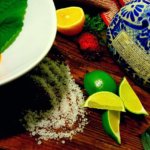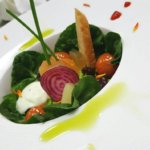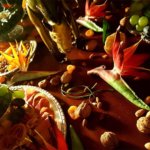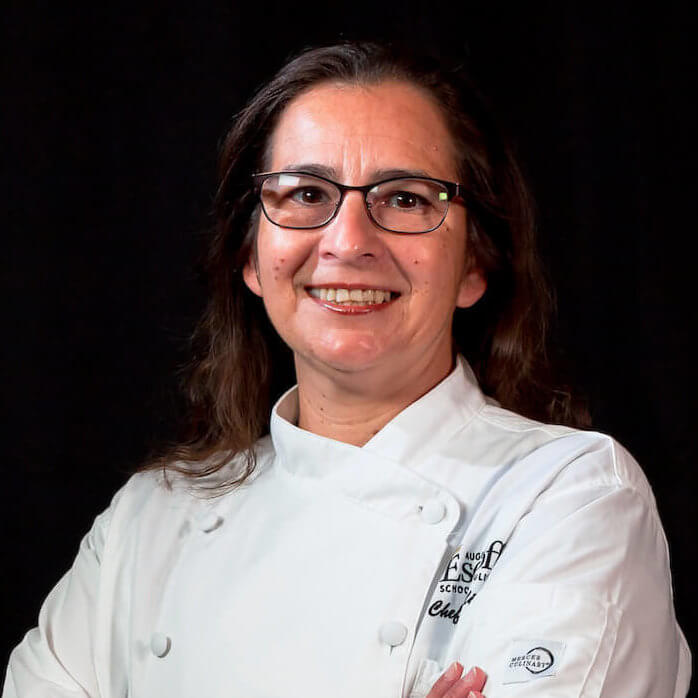These days, it seems like the world is full of amateur food photographers, each of us carrying our cameras and “studios” around in our pockets.
Both home cooks and professional chefs often enjoy sharing their culinary creations with friends, family, customers, and the world at large. A little food styling know-how can really make pictures pop and get people’s mouths watering, even when they’re not in the smell zone.
Some culinarians make food styling their entire career! They arrange food for magazines, cookbooks, movies, television, and commercials. Sometimes, food photographers do double duty as food stylists as well, if there isn’t a professional stylist on the shoot. And for us amateurs who just want a nice picture for our Instagram feed, style tips can still come in handy.
Step up your plate aesthetics with these food styling tips from Escoffier Chef Instructor and food stylist for film, television, and print, Billie Sutton.
Real Food vs. Fake Food
When we’re looking at a perfect food photo, we may wonder if we’re seeing a real, edible dish, or if tricks of the trade and clever camera gimmicks are doing all the work. For commercials, there are strict rules about what can be fake and what must be real. If the food being filmed or photographed is the product being advertised, it has to be real. But in films, television, and social media, there are no such rules.
Chef Billie says, “My point of view is it needs to be real food. Sometimes there might be a scenario that is going off the spectrum where you might replace it [with something fake], but it’s pretty rare.”
Chef Billie has a particular reason for using only edible ingredients in her food styling. As a stylist for productions like Westworld and The Call of the Wild, she never knows when an actor is going to take a bite of something. So she has to be careful to keep the food both looking great and safe to eat.
This can get tricky. One of the things she styles often is a holiday meal with roast turkeys or chickens. “If you cook a turkey or chicken all the way through, the skin dries out,” she says. “To get that golden color, you actually have to cook it through, but not to the point where that skin is wrinkled. And then you play around with butter spray and brown sauce and all kinds of stuff to then make it be that image that you want.”
With this level of attention to detail required, a culinary degree can be a huge help to a food stylist!
“Getting a degree or certification is going to be a great foundation and make you stronger [as a food stylist]. Having a culinary degree is one of those qualifications a lot of food stylists don’t have.”
Chef Billie Sutton, Escoffier Chef Instructor and Food Stylist, Imagine Food Styling
Balance Colors and Textures
An attractive plate is all about balance. One way to achieve this is to play with color. Complementary colors (red and green, purple and yellow, blue and orange) help to create that desired balance. Adding these colors from the opposite sides of the color wheel creates a pop on the plate, says Chef Billie.
Many chefs already do this intuitively. A sprig of parsley on a plate adds a bit of green for visual interest. A bright red sauce dabbled across a white plate creates a similar effect.

Contrasting colors create visual interest. Photo and styling by Imagine Food Styling.
Another feature of balance is using negative space. This is the empty space left on the plate around the food. By not overcrowding the food, you let each element stand out. The same principle applies for the composition of the photo itself. Leave some negative space around the plate in the photo frame instead of zooming in too close.
You can experiment with height as well. Just like any other photo, a food photo should have depth. A tower of shoestring fries is much more visually interesting than a pile!
Finally, there’s the element of texture. Even if no one is going to eat this dish, you still want it to look appetizing. That’s the whole point! So you need to show interesting textures, just like you would for a customer’s palate. That visible “crunch factor” will make the viewer want to take a bite.

The sea salt in this image adds the “crunch factor.” Photo by Imagine Food Styling.
“[For film or photos,] take the same standard elements of plating and just supersize it a little bit.”
Chef Billie Sutton, Escoffier Chef Instructor and Food Stylist, Imagine Food Styling
Keeping Food Looking Fresh
Food styling on set means lots of hot lights for Chef Billie. She has to be hyper aware of the effects of heat and time on the food she is styling. But even at home, greens can wilt and juices can run from your succulent steak very quickly.
To prevent your food drying while you get the shot set up, plastic wrap the food. Then put it in place and get your camera set up with the optimal lighting and settings. Make sure to store the food safely until the right shot is taken. Sometimes food may still dry out during shooting, in which case always prepare backup plates ahead of time.
Another tip is to keep backups. Store extra greens in the fridge to stay crisp in case you need a refresh, and make two proteins instead of one.
One of Chef Billie’s favorite tricks is to use vegetable glycerin on food to create a nice shine. It’s edible, so it’s okay if the A-list star takes a big bite. Another option is to spritz food with water to keep it looking fresh.

A salad styled by Imagine Food Styling.
Lighting Is Key!
“When it comes to shooting food, natural light is the best way to go,” says Chef Billie. Natural light provides clear, even illumination, and makes food look its finest. Set up your shot near a window if possible.
But keep in mind that you don’t want a reflection on the plate, and you don’t want the food to cast shadows on the plate either. A semi-transparent screen can diffuse the light from the window to prevent a harsh glare and shadows.
You can also use a piece of white foam board to bounce some of the light back toward its source. Put the plate between the light source (the window) and the foam board to reflect the light back toward the window and minimize shadows.
“I notice a lot of people buy these cool LED photo booth boxes,” says Chef Billie. “But then you look at the plate and you see little dots of lighting [reflecting off the plate.] You don’t want to see those reflections.”
“With natural light, almost anybody can take some pretty food photos on their phone.” Rhonda Adkins, Food Photographer & Online Culinary Arts Graduate

Side lighting creates a contrast of illumination and shadow in this shot by Imagine Food Styling.
Stay Flexible
Whether you’re styling your plates at home for your Instagram feed or on a large set for a blockbuster movie, stay flexible and bring a “can-do” attitude to your project.
Chef Billie usually gets inspiration photos in advance from the director. But when she gets to the set, the requirements may have already changed without notice.
“I was on this set of Call of the Wild [starring Harrison Ford] and we suddenly had to create a three-tiered frosted cake. We needed to have a cheese wheel and have five Bundt cakes. I literally thought they were kidding. But no, we had to suddenly have that at that second. So we ran out and we got what we needed to and made it happen.”
“If you’re trying to get on the union roster [for film or television work], it helps you if you have that culinary degree. A lot of those final plates on a lot of baking and cooking shows are done by food stylists. If you see a tower of macaroons, it’s gonna be the food stylists doing it.”
Chef Billie Sutton, Escoffier Chef Instructor and Food Stylist, Imagine Food Styling
Upgrade Your Plating Skills
A little extra care in your food styling can elevate your plates and food photography from “alright” to “awesome.” Even if you don’t want to be a professional food stylist like Chef Billie, you’ll want to make your dishes as attractive as possible for your social media feed and for your restaurant guests—or just for your family!
A culinary education at Escoffier can give students the fundamentals of plating and attractive food styling, which they can then use wherever their career goals take them. Get in touch to find out what else you can explore in culinary school!
To explore more about the culinary arts, try these articles next:

 “Getting a degree or certification is going to be a great foundation and make you stronger [as a food stylist]. Having a culinary degree is one of those qualifications a lot of food stylists don’t have.”
“Getting a degree or certification is going to be a great foundation and make you stronger [as a food stylist]. Having a culinary degree is one of those qualifications a lot of food stylists don’t have.” “With natural light, almost anybody can take some pretty food photos on their phone.” Rhonda Adkins, Food Photographer & Online Culinary Arts Graduate
“With natural light, almost anybody can take some pretty food photos on their phone.” Rhonda Adkins, Food Photographer & Online Culinary Arts Graduate